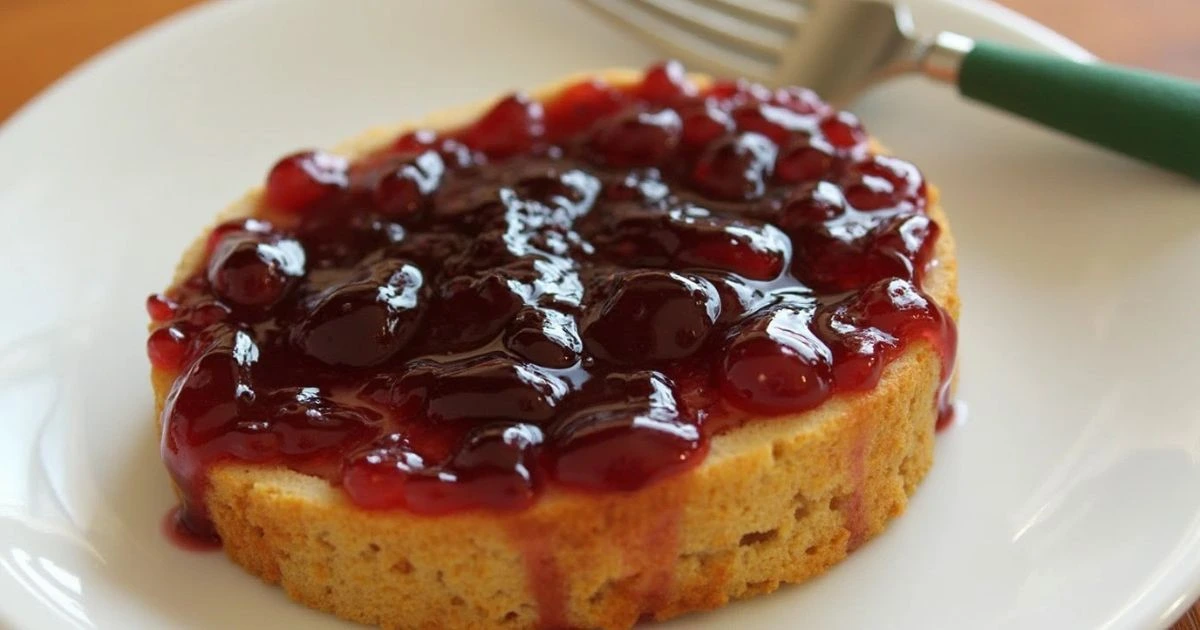Muscadine jelly recipe isn’t just another preserve; it’s a jar full of memories and a sweet nod to Southern traditions. Whether you’re new to muscadines or grew up savoring their unique flavor, making your own jelly is a rewarding experience that brings a touch of homemade charm to your kitchen. With just a handful of ingredients and some patience, you can create a spread that’s perfect for toast, biscuits, or even a Southern charcuterie board. Let’s dive into this simple yet flavorful recipe that captures the essence of muscadine grapes.
Table of Contents
What Makes Muscadine Jelly So Special?
Muscadine grapes are native to the Southeastern United States, where they thrive in the warm, humid climate. Known for their thick skins and musky, robust flavor, these grapes are a Southern favorite, often used in wines, juices, and, of course, jellies.
What sets muscadine jelly recipe apart is its balance of sweetness and tartness, making it an ideal accompaniment for both savory and sweet dishes. Beyond its taste, muscadine grapes are rich in antioxidants, including resveratrol, which is known for its heart-health benefits. When you make jelly from these grapes, you’re not just preserving their flavor—you’re also bottling up a piece of Southern heritage.
Ingredients You’ll Need
Before you start, gather the following ingredients to ensure a smooth jelly-making process:
| Ingredient | Quantity | Notes |
|---|---|---|
| Fresh muscadine grapes | 5 pounds | Ripe, juicy, and fragrant |
| Granulated sugar | 5 cups | Adjust to taste |
| Pectin | 1 package | For a reliable set |
| Water | 1 cup | Helps extract juice |
These simple ingredients come together to create a rich, flavorful jelly that’s bursting with natural goodness.

Step-by-Step Guide to Making Muscadine Jelly recipe
Step 1: Prepare the Grapes
Start by washing your muscadine grapes thoroughly under cold water. This removes any dirt or pesticides, ensuring a clean and safe jelly. If you prefer a smoother jelly, you can separate the grape skins from the pulp. While this step is optional, it can enhance the jelly’s texture by reducing fibrous bits.
Step 2: Extract the Juice
Place the grapes and water in a large pot and simmer over medium heat until the fruit softens. Stir occasionally to prevent sticking. Once the grapes are tender, strain the mixture through a fine-mesh sieve or cheesecloth to separate the juice from the pulp and seeds. This step may take some time, but it’s crucial for a clear, vibrant jelly.
Step 3: Cook the Jelly Mixture
In a large pot, combine the strained juice, sugar, and pectin. Bring the mixture to a rolling boil, stirring frequently to dissolve the sugar. The aroma of the muscadines will fill your kitchen, making this step as enjoyable as it is essential.
Step 4: Test for Proper Gelation
To ensure your jelly sets properly, use the spoon test or plate method. Simply place a small amount of jelly on a cold plate, let it cool for a moment, and then push it with your finger. If it wrinkles slightly, it’s ready.
Step 5: Jar and Store
Sterilize your jars and lids by boiling them for 10 minutes. Pour the hot jelly into the prepared jars, leaving about 1/4 inch of headspace. Wipe the rims clean, seal with the lids, and process in a water bath canner for 10 minutes. Once cooled, check the seals before storing.
Tips for Perfect Muscadine Jelly recipe
Making jelly may seem daunting, but with a few tips, you’ll master it in no time:
- Choose ripe grapes: Fully ripe muscadines yield the sweetest, most flavorful juice.
- Don’t rush the straining process: Allow the juice to drip naturally for the clearest jelly.
- Adjust sweetness to taste: If you prefer a less sweet jelly, reduce the sugar slightly.
- Experiment with flavors: Add a touch of cinnamon, nutmeg, or lemon zest for a unique twist.
Serving Ideas for Muscadine Jelly recipe
Muscadine jelly recipe is incredibly versatile and pairs well with a variety of dishes:
- Spread it on warm, buttery biscuits for a classic Southern breakfast.
- Use it as a glaze for pork or chicken to add a sweet, tangy touch.
- Pair it with sharp cheeses on a charcuterie board.
- Swirl it into yogurt or oatmeal for a fruity kick.
- Add it to thumbprint cookies for a delightful dessert.
Health Benefits and Nutritional Information of Muscadine Jelly recipe
Muscadine jelly recipe is not only a flavorful treat but also carries some surprising health benefits thanks to the nutrient-rich muscadine grapes from which it’s made. These grapes are known for their robust nutritional profile and have been a staple in Southern diets for generations.
Health Benefits
- Rich in Antioxidants:
Muscadine grapes are packed with polyphenols, including resveratrol, a powerful antioxidant that supports heart health and helps combat inflammation. These compounds may also contribute to anti-aging benefits and improved skin health. - Supports Digestive Health:
The dietary fiber found in muscadine grape skins helps support healthy digestion and promotes regular bowel movements. While jelly doesn’t contain fiber, the natural compounds in the grapes still contribute to overall wellness. - Boosts Immune Function:
Muscadine grapes are a natural source of vitamin C, which strengthens the immune system, aids in collagen production, and supports wound healing. - Provides Energy:
The natural sugars in muscadine jelly offer a quick source of energy, making it an excellent choice for a mid-morning pick-me-up or post-workout snack.
Nutritional Information (Per Tablespoon of Muscadine Jelly)
| Nutrient | Amount |
|---|---|
| Calories | 50 |
| Total Fat | 0g |
| Sodium | 0mg |
| Total Carbohydrates | 13g |
| – Sugars | 12g |
| Protein | 0g |
| Vitamin C | 2% of Daily Value |
A Sweet Addition in Moderation
While muscadine jelly offers nutritional perks, it’s still a sweet treat and should be enjoyed in moderation, especially for those monitoring sugar intake. Pairing it with whole-grain bread or using it as a natural sweetener in recipes can be a balanced way to savor its benefits.
Incorporating muscadine jelly into your diet isn’t just about enjoying a Southern delicacy; it’s also a small step toward better health.

Frequently Asked Questions (FAQs)
Can I Make Muscadine Jelly Without Pectin?
Yes, you can! Muscadine grapes contain natural pectin, especially in their skins. If you prefer a natural approach, cook the grapes longer and use less water to concentrate the natural pectin.
How Long Does Homemade Muscadine Jelly Last?
Properly sealed and stored in a cool, dark place, muscadine jelly can last up to 12 months. Once opened, keep it refrigerated and consume it within 3 weeks.
Can I Freeze Muscadine Jelly?
Absolutely! Freezing is an excellent option if you prefer not to use a water bath canner. Just pour the jelly into freezer-safe containers, leaving space for expansion, and freeze for up to a year.
Conclusion
There’s something magical about turning fresh muscadine grapes into a jar of homemade jelly. It’s not just about preserving fruit—it’s about preserving tradition, flavor, and the joy of creating something with your own hands. Whether you’re spreading it on toast or giving it as a gift, muscadine jelly is sure to delight.
Ready to try this easy muscadine jelly recipe? Share your results in the comments below and tag your photos with #SouthernJellyCreations on social media. Let’s keep this tradition alive, one jar at a time!

